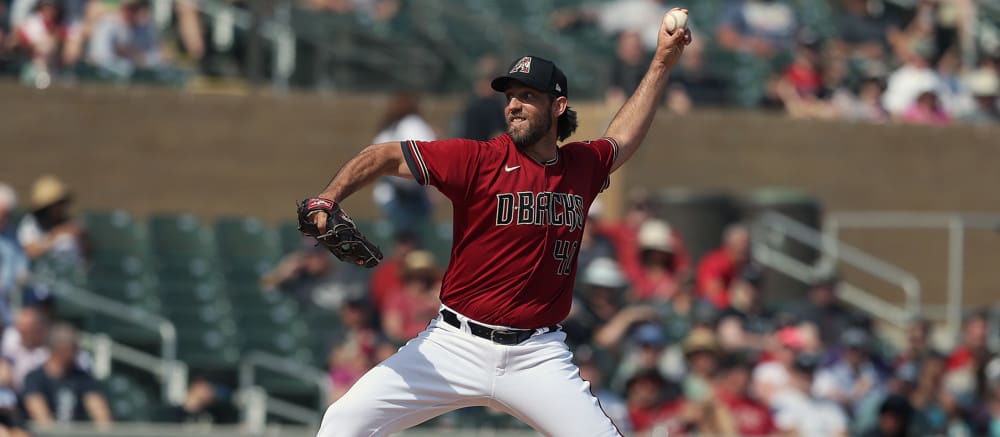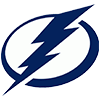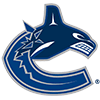On the surface, Mitchell White pitched really well for the Dodgers on Sunday, holding Arizona hitters to just one hit and one run over five innings while walking none. White struggled mightily last year in Triple-A, posting a 6.50 ERA and 1.53 WHIP over 63.2 innings. We all know the Pacific Coast League is tough on pitchers, but that's obviously still pretty poor. White, though, is used to be a pretty highly rated prospect, so he does still bear watching in deeper leagues. Notice the phrase "On the surface" though, as there were some concerning things:
Just two strikeouts
Six hard hit balls, one of which went over the fence
14 balls put in play
Don't get me wrong, it was an encouraging outing, but he won't be so lucky next time. It did get me thinking about pitchers who had an elevated hard-hit rate last year, but whether it be by luck or something else, maintained a low ERA. Maybe you think twice about drafting these guys at their current ADPs. Some interesting names on this list to be sure. For reference, John Means somehow had the lowest hard-hit rate (27.8 percent) of any pitcher with 100 or more innings in 2019. Other pitchers in the top-10 lowest list included Jacob deGrom, Zack Wheeler and Stephen Strasburg.
Madison Bumgarner, Arizona (HH% - 43.8%, ERA - 3.90)
Bumgarner is lining up to be the team's Opening Day starter in San Diego, but it seems unlikely he'll have the
On the surface, Mitchell White pitched really well for the Dodgers on Sunday, holding Arizona hitters to just one hit and one run over five innings while walking none. White struggled mightily last year in Triple-A, posting a 6.50 ERA and 1.53 WHIP over 63.2 innings. We all know the Pacific Coast League is tough on pitchers, but that's obviously still pretty poor. White, though, is used to be a pretty highly rated prospect, so he does still bear watching in deeper leagues. Notice the phrase "On the surface" though, as there were some concerning things:
Just two strikeouts
Six hard hit balls, one of which went over the fence
14 balls put in play
Don't get me wrong, it was an encouraging outing, but he won't be so lucky next time. It did get me thinking about pitchers who had an elevated hard-hit rate last year, but whether it be by luck or something else, maintained a low ERA. Maybe you think twice about drafting these guys at their current ADPs. Some interesting names on this list to be sure. For reference, John Means somehow had the lowest hard-hit rate (27.8 percent) of any pitcher with 100 or more innings in 2019. Other pitchers in the top-10 lowest list included Jacob deGrom, Zack Wheeler and Stephen Strasburg.
Madison Bumgarner, Arizona (HH% - 43.8%, ERA - 3.90)
Bumgarner is lining up to be the team's Opening Day starter in San Diego, but it seems unlikely he'll have the best season of any Arizona starter. Bumgarner saw his strikeout rate drop to 2010 levels at 19.8 percent last year while his walk rate was the worst of his career at 7.8 percent. He also now gets to compete in the desert air of Arizona and 20 percent of the team's games will come against the rough offenses of the Astros and Dodgers. At his peak in San Francisco, Bumgarner's hard-hit rate routinely fell well below 30 percent, but it's now been above 40 percent in each of the last two seasons. We have him projected to post a 4.11 ERA this year, but the underlying data has led other projection systems to be far less generous, including Steamer at 4.70. Buyer beware.
Robbie Ray, Arizona (HH% - 43.4%, ERA - 4.34)
Ray has risen rapidly on many draft boards, due in no small part to the work he's put in this summer, including allowing just one run in 11 innings with a 17:3 K:BB. Of course, those were intrasquad games, and I don't have the Diamondbacks as an elite offense, so take it with a grain of salt. At the same time, however, Ray has lost weight and revamped his delivery, so don't discount it either. With a 4.1 career BB/9, control has been the one thing holding him back, as Ray has posted three consecutive seasons with a 12+ K/9, though the walks and home runs have limited his ERAs the past two years to 3.93 and 4.34. I'm cautiously optimistic, but if weight loss and a different delivery were his only issues, wouldn't he have addressed those years ago?
Shane Bieber, Cleveland (HH% - 42.6%, ERA - 3.28)
Bieber's hard-hit rate fell into the fourth percentile, which obviously isn't very good, but he's still sporting an ADP of 26 coming off a season in which he posted a 3.28 ERA with 259 strikeouts. The hard contact resulted in 31 home runs, meaning that when he missed, his 93-mph average fastball was able to be squared up pretty well. Bieber mitigated the long ball damage with a 1.7 BB/9. His 43.9 GB percentage was around average, and both his fastball and slider graded out elite. Guys with lower than average velocity can be a bit risky, and all are not Greg Maddux, so if Bieber loses even a bit of his elite level control and command, fantasy owners are going to regret drafting him in the third round. Bieber is going to be the team's Opening Day starter, and he should be a top-10 fantasy starter, but there is a bit of downside risk with his profile.
Jake Odorizzi, Minnesota (HH% - 42.3%, ERA - 3.51)
There's a lot to like with a guy who has averaged a shade over 30 starts a season for the past six years, but Odorizzi isn't exactly a guy primed to take a huge step forward. He's a very valuable mid-rotation starter, posting a 3.88 career ERA with decent ratios, including an 8.6 K/9 and 3.1 BB/9. Surprisingly, considering the juiced ball, Odorizzi has limited home runs pretty well the past two seasons with a 1.0 HR/9. Of some concern, his 35.0 GB percentage is below average, leaving that HR/9 primed for potential regression. It's a bit surprising that the average velocity of Odorizzi's fastball jumped from 91.1 mph to 92.9 mph last year. Whether he can carry that over to 2020 remains to be seen, but Odorizzi remains a risk to see his ERA jump into the 4-plus range this year.
Chris Paddack, San Diego (HH% - 42.1%, ERA - 3.33)
Rightfully so, Paddack is set to serve as the Padres Opening Day starter after an impressive rookie campaign in which the right-hander ended up with a 3.33 ERA, 0.98 WHIP, 9.8 K/9, and 2.0 BB/9. All those numbers are excellent, but keep in mind Paddack's FIP ended up at 3.95 due in large part to a 1.5 HR/9. The hard-hit rate is a bit concerning as is his barely average 11.4 percent swinging-strike rate. Paddack has a plus fastball and change, though his curve graded out slightly below average. I'm not too worried about all that, as Paddack is just 24 and the owner of ridiculous minor league stats (1.82 ERA and a 230:20 K:BB in 177.2 innings), so the best should be yet to come. Just know that there may be some growing pains, as he's not exactly a flamethrower with a 93.9 mph average fastball.
Clayton Kershaw, LA Dodgers (HH% - 42.0%, ERA – 3.03)
Kershaw is ready to go as the team's Opening Day starter, as he's already tossed back-to-back 90-pitch outings. This will obviously be the fifth consecutive season in which he failed to make 30 starts, but in a 60-game season, Kershaw should be able to reach 70 to 75 innings with an ERA in the 3.00 range. For a guy with nearly 2,300 regular season innings under his belt, Kershaw is clearly on the tail end of his career, but I do think he'll age a bit better than Felix Hernandez for example. Last year was Kershaw's age-31 season, and in that season (2017), Felix managed just 86.2 innings before falling apart in 2018-2019. Kershaw's 3.86 FIP last year was his worst mark since his 2008 rookie season, so there is a chance he regresses his ERA into the 3.70 range, but his apparent health and work with the Driveline Pitching program should help offset some of that downside.
Aaron Nola, Philadelphia (HH% - 41.9%, ERA - 3.87)
I really don't know why Nola's hard-hit rate jumped year-over-year from 25.1 to 41.9 percent, but it appears due primarily to the regression in the effectiveness of his 92.9 mph average fastball. Coming off a 2018 season in which he went 17-6 with a 2.37 ERA, Nola appeared primed to compete for the NL Cy Young, but with his walk rate regressing from 7.0 to 9.4 percent, things didn't go as expected. Nola still struck out a solid 26.9 percent of batters he faced, but his HR/9 regressed from 0.72 to 1.20. To me, I just don't see Nola as ace material unless he can add some velocity and improve his command and control significantly. He'll be the team's Opening Day starter, though don't expect big innings right away, as Nola was a bit behind in camp due to being exposed to (but not testing positive for) COVID-19.
Justin Verlander, Houston (HH% - 41.8%, ERA - 2.58)
A probable future Hall-of-Famer, Verlander is coming off his fourth consecutive season having made at least 33 starts, winning at least 15 games with a combined 2.87 ERA while averaging 265 strikeouts. Just incredible numbers considering this is his age-37 season. Might this be the year things go sideways? His hard-hit rate was a career-worst, though somehow, Verlander managed to post a career-best 16.1 percent swinging-strike rate. It's tough to see a guy falling apart a year after striking out 300 hitters for the first time, so he's probably still a solid second-round pick, but we could see some ERA regression into the 3.50 range.
Walker Buehler, LA Dodgers (HH% - 41.8%, ERA - 3.26)
I'm a Dodgers fan and a huge Buehler fan, but I just don't see how drafting him in the second round this year will pay off. The big concern is that Buehler apparently won't be quite ready for a full workload right away, so whether that means he's throwing 90 to 100 pitches by his second start, fourth start, sixth start, etc., remains to be seen. With electric stuff and elite ratios (10.6 K/9 and 1.8 BB/9 last year), Buehler has all the upside in the world, and with a fastball that averages nearly 97 mph, he's right at that second tier of starters behind the Cole/deGrom/Verlander/Scherzer group. It's just that in this shortened season, I'm not sure he's a top-10 starter.
Trevor Bauer, Cincinnati (HH% - 41.3%, ERA - 4.48)
Is there a more overrated pitcher in the game? I get that Bauer is an entertaining Twitter follow, but in his age-29 season, Bauer has just one season (an elite one) with an ERA below 4.00. Outside of 2018, Bauer has a 4.39 ERA, 1.33 WHIP, 1.2 HR/9 and 3.6 BB/9. In addition, he was a complete dumpster fire with the Reds last year, posting a 6.39 ERA in 10 starts after the Indians dumped him on the Reds after his childish outburst in Kansas City in which he threw a ball out to center field after the elite Royals offense torched him for eight runs in 4.1 innings. Bauer could certainly find his groove again and post a sub-3.00 ERA as he looks toward free agency after this season, but despite last year's career-high 253 strikeouts, I'm not sure I'm drafting him unless he falls into the 8- to 9-round range.

































